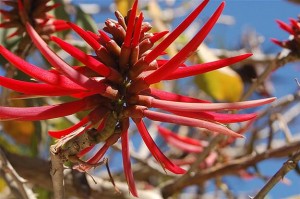 The year 2010 had been declared as the ‘International Bio-diversity Year’. As usually happens on such occasions a number of seminars and other activities were organized all over and magazines were full of related articles. As I took part in some of these activities my mind started moving simultaneously on multiple trails. One of the trails led me back in time by more than half a century, to the days of my childhood, spent mostly in the small towns of Himalayan hills. Another trail took me to the fascinating world of birds. Sparrow and crow used to be most common among birds, and perhaps crow was most conspicuous by its easily recognizable voice. When a child started uttering monosyllables like ‘ma’, ‘ba’ and ‘pa’, it also got familiar with the house cat’s ‘mew’, dog’s ‘wow’, and crow’s cawing ‘kaa’. Cow’s ‘amah’ was among such sounds which children used to copy. In small towns and villages crow was invariably present in abundance, and children were advised not to carry any food in the open, as there were crows and eagles lurking with their sharp eyes focused on the item in their hands. There was obvious danger of the thing being snatched away, and in the process the risk of getting hurt. Unlike crow gentle sparrow was among lovely little things a child was never afraid of. Picking up scattered grains the little thing hopped from place to place with children running after it. Chasing a sparrow, frightening it away, gave a strange satisfaction to a child as in most cases the situation was otherwise.
The year 2010 had been declared as the ‘International Bio-diversity Year’. As usually happens on such occasions a number of seminars and other activities were organized all over and magazines were full of related articles. As I took part in some of these activities my mind started moving simultaneously on multiple trails. One of the trails led me back in time by more than half a century, to the days of my childhood, spent mostly in the small towns of Himalayan hills. Another trail took me to the fascinating world of birds. Sparrow and crow used to be most common among birds, and perhaps crow was most conspicuous by its easily recognizable voice. When a child started uttering monosyllables like ‘ma’, ‘ba’ and ‘pa’, it also got familiar with the house cat’s ‘mew’, dog’s ‘wow’, and crow’s cawing ‘kaa’. Cow’s ‘amah’ was among such sounds which children used to copy. In small towns and villages crow was invariably present in abundance, and children were advised not to carry any food in the open, as there were crows and eagles lurking with their sharp eyes focused on the item in their hands. There was obvious danger of the thing being snatched away, and in the process the risk of getting hurt. Unlike crow gentle sparrow was among lovely little things a child was never afraid of. Picking up scattered grains the little thing hopped from place to place with children running after it. Chasing a sparrow, frightening it away, gave a strange satisfaction to a child as in most cases the situation was otherwise.
Beyond pets, crow and sparrow were an integral part of child’s familiarization process with the living world. I remember vividly a unique festival celebrated in Almora and many other areas of Kumaon region of Uttarakhand which had something to do with the crow. Fourteenth of January is an important festival in the entire country, the ‘Makar Sankranti’, heralding the northward journey of the sun. On the fifteenth children’s favourite festival known as ‘kale kawwa’ ( or black crow ) was celebrated by offering food to crows. Cooked food items (referred to as ghughutas) in different shapes and sizes were tied to a thread made in the form of a garland which hanged around every child’s neck. Just before sunrise children were out either on the roof or verandah and started inviting crows. For almost two hours the whole area echoed only one sound with children inviting crows -‘kale kawwa, kale kawwa’. This strange festival is not heard of in the rest of the country, or even in entire Uttarakhand. Nobody ever gave us an explanation for this; may be, we thought, some good crow in an earlier era might have knowingly or otherwise helped some child of a royal family. Crows too seemed to realize that they were not quite unwelcome as on other days and appeared to enjoy. Needless to say most of the food was for child’s consumption, the birds could get 15-30 percent depending upon the need and mood of the child. This is merely an example to indicate how cultural patterns evolved varying from region to region. Every region in the land had its own pattern and flavour in maintaining traditions closely linked with seasons, crops and folklore.
I don’t know if children in Kumaon still follow the custom. Even if they do, ready to offer ghughutas to the crow, one could not be sure if the bird is really around to accept the offer. I also spent a substantial part of my life in Allahabad near the banks of Ganga. Twenty years back even in town areas one could hear the sweet cuckoo voice with the approaching summer and it continued to entertain you for months altogether. These few years I have forgotten that voice too. Where have they gone? These days a child can fearlessly take his bread in the open and eat it with negligible risk from crows and eagles. This is the situation in a small town near the banks of a major river. I am not talking of metropolitans with skyscrapers where bird watching would require a visit to a zoo. Things have really changed.
Vultures were not usually visible and it was among the lesser known birds to a child. However, in villages and outskirts of towns they made their presence felt and were known by their scavenging acts on the dead animals. Nature’s scheme appeared to have something for everybody. Today the powerful vulture too has become a rarity.
Each season had its own brand of birds. Cuckoo was not so common in hills but there were others. In summers a wild kind of fruit resembling small sized berries became ripe. It was known as ‘kaphal’, a peculiarity of only that area. And along with its ripening was associated the voice of a bird which used to chirp somewhat like: tua-tut –tu, tua-tut-tu, tua-tut-tu; to people it sounded like ‘kaphal paako, kaphal paako, kaaphal paako’,… meaning that kaphal has ripened. Kaphal was a reality, that bird and its chirping was a reality, the two things came around the same time was also a reality, the rest was folklore. This was the time when in warmer areas cuckoo was heard often. Every region had area specific profile of birds and plants and the variety was always there.
I still remember yet another feature typical of that region – the Holi festival. Playing with colours was just a part of it, another and no less important was the musical aspect. Groups of children of different age groups roamed around at night singing the ‘Holi’ – songs typical of that festival. Households with enough space and resource organized nightlong singing sessions. All this has already become a victim of information revolution and globalization.
Birds are related to plants, more the plant species and numbers, greater seems to be the bird variety. In this variety of plants there used to be some which children were afraid of. A small plant with leaves consisting of small hairy formation over it was known as ‘sishoona’. If a part of skin came in its contact then there was immense pain and irritation which persisted for almost an hour or two. There were folklores in several areas about the bird known as ‘chakore’, supposed to be fascinated and obsessed with the moon. The local literature in several parts in North India is full of stories and songs based on related folklores.
The diversity of flora and fauna is a reflection of the environmental conditions. The variation in the cultures and traditions is likely to reflect this variety. The growth and development of different languages and their literature is an important aspect of human cultural diversity. This diversity is clearly perceptible in our own country. However, all this is in a state of flux with things changing at an unimaginable pace. The diversity that we witness arose from variety of environmental conditions and the growth of cultural patterns in complete or partial isolation. With the coming of scientific and industrial age, a revolution in transport and communication changed the scenario and a mixing or fusion of various traditions became a possibility. As it happens every development has its own set of advantages and drawbacks. The process of globalization has brought changes in lifestyle and pattern of communication. At the cultural level the process of globalisation coupled with economic compulsions has resulted in declining creativity in many languages all over the world. In India too, the younger generation is less inclined towards the use of region’s language and more towards using English. English as the global language has connected us to the world, and in India too this has taken roots for good. However, it would be for us to see that the element of creativity and diversity in literatures of various languages is not completely lost with the onset of the age of information technology.
Most of us are bilingual or trilingual. It will require a clear vision and a strong will power to decide upon a plan of action and seek a balance between developmental process and cultural diversity. It is true that the changes brought about by technology have made an irreversible impact on our lives. Along with the lifestyle our thinking and behavioural patterns are also in a state of flux. ‘Digitally connected but psychologically isolated’ – that is how one may sum up the present day scenario.
Modern technology has given us enormous advantage to mankind. That is a fact and it is here to stay. However, every technology is like a double edged sword and it can cut both ways. Pollution is intrinsically linked to industrial development that is so essential to a modern life style. Over the past few decades a large number of birds, fish and plant species have been endangered due to environmental degradation. The information revolution too has its own possible after effects which may take some time to fully manifest itself. It’s up to us to try to analyse the problem objectively and understand our own role in the entire scheme. The exercise may be tough and that is all the more reason to take up the challenge trying to understand the impact of each new development in its totality.
Consequently he who wants to have
Right without wrong,
Order without disorder,
Does not understand the principles,
Of heaven and earth.
He does not know how
Things hang together.
- Chuang Tzu
Life breeds diversity whereas death is a great leveler and destroys diversity. There is hardly a difference between a dead monarch and a dead beggar. It was life and living that brought the difference. Why are we humans so intolerant and inconsiderate in accepting this simple fact. That is essentially a difficult question to answer and a challenge to human intellect and capability. However, in India we have a relatively higher level of acceptance of diversity. This is both our enormous strength and weakness too.
We as humans and also as members of the intelligentsia have to hang together to seek a meaningful resolution to deeper queries pertaining to diversity, ecology and our own psychology in dealing with them. If we fail to do so nature will take its own course.




